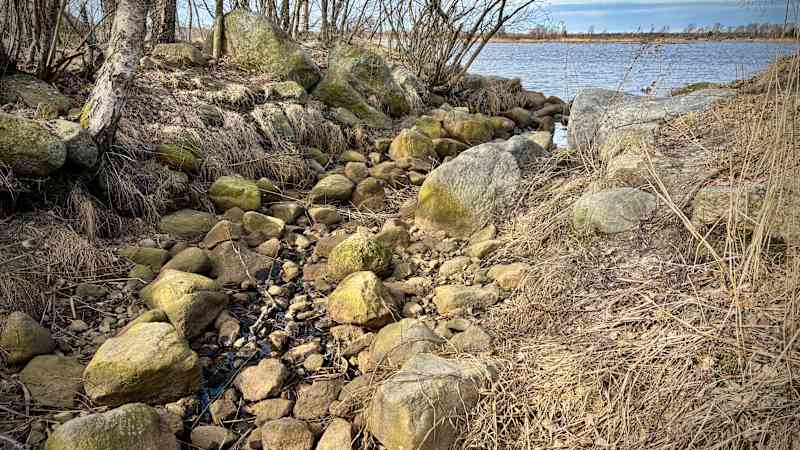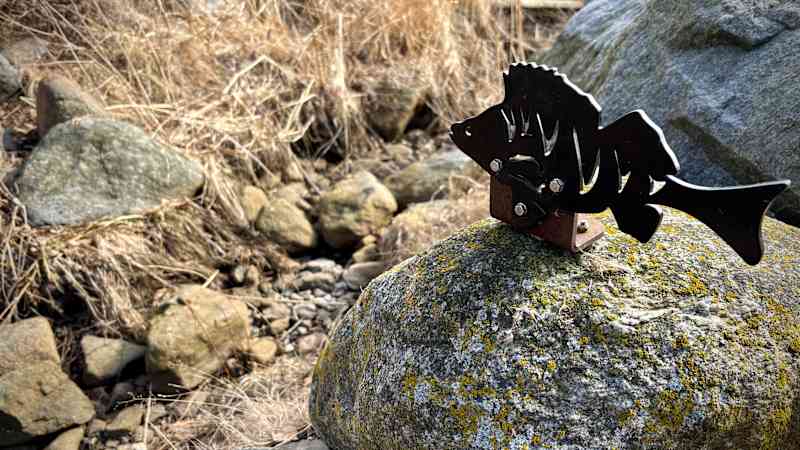The Kvarken is now so dry that thousands of fish are flocking to the sea in search of a route to a traditional spawning stream

World heritage guide Vesa Heinonen has been observing fish spawning in Kvarken for 25 years. There has been little water before, but never this dry.
Bodvattnet in Björköby, Ostrobothnia, in the Kvarken World Heritage Area, is a popular nature destination.
It is also one of the most important fish breeding grounds in the area during the ice-out period.
In spring, tens of thousands of perch, bass and pike rise from shallow, ice-formed bays to spawn in inland freshwater lakes, known as ‘gullies’.
Now, the creek’s slim and fish sparkle are not visible or heard, as the stream used by the fish spawning is so dry that the rise to the kluu will not succeed.
– All the little snow has disappeared long ago and the melting water has run into the sea. Therefore, the water level of this body of Bodvattnet is so low that there is no longer enough water in the creek.
In addition to low snowfall, the past winter was also an exceptional ice winter, as the sea was frozen for only four months.
The sea is not a safe place to spawn
In between, the spawning spawning does not remain despite the drought.
Now the fish fall into the sea bay at the mouth of the creek, or Flada, which, according to Heinonen, is half -sweet.
However, the challenge of itching in the sea is now that Flada’s cold is.
In the summer, the challenge, on the other hand, becomes protection, as in the larger sea bay, the risk of chicks in the mouth of others is significantly higher than in the inside. Therefore, the new age group is now likely to be lower than normal.
The sweet and shallow kluvi of one hundred hectares would warm up quickly in the summer and would be a more favorable place for fish growth. And when a few hundred meters from the stream were opened in the fall, well -nourished and grown fish would enter the sea.
– Then, in a few years, they will come back here to wonder if this year is water, Vesa Heinonen describes the circulation of nature and fish.

Are exceptional circumstances the new normal?
Vesa Heinonen has been following the spring spawning of the fish for 25 years, but there has never been such a drought.
– In the past, there may have been little water, though only about twenty cents, but not such a drought.
According to Heinonen, the problem is now the same in many other similar places where drought has cut off the fish’s connection from salty bays to sweet claws.
Extreme weather events have increased and Heinonen fears that winter like this is one sign of it.
\”Repeated record -breaking years mean that they should adapt to this expense already in February,\” says Heinonen.
According to Heinonen, adapting to changes in nature can take up to a thousand years. There is a tremendous difference to a situation like the current one where the change will take place in a few years.
Heinonen fears that the situation in terms of the extremes of the weather will be worse on average, even if there are sometimes more snowy winters.
– The climate has changed. Many people who follow the wild have noticed, among other things, the increase in strong winds. Anyone who does not believe in climate change will come to see what it looks like here now, says Vesa Heinonen.
